During the fourth week of July, the Amateur payload on-board DSLWP-B was active in the following slots.
- 22 Jul 06:14 to 08:14
- 22 Jul 22:40 to 23 Jul 00:40
- 23 Jul 23:20 to 24 Jul 01:20
- 25 Jul 00:30 to 02:30
- 26 Jul 10:55 to 12:55
- 27 Jul 02:30 to 04:30
- 28 Jul 03:30 to 05:30
Additionally, Wei Mingchuan BG2BHC shared on Twitter the 10 minute slots for the activations of the X band transmitter. This transmitter uses a frequency of 8478MHz (in the Deep Space X band) and 2Mbps BPSK with CCSDS standards. The transmit power is 2W and the gain of the small X-band dish is 22dBi. The signal is detectable with small stations (as shown here), but to demodulate the data a large dish is needed. The Chinese DSN uses 35m and 50m antennas to receive this signal.
2019-07-22 morning
On July 22, the payload was active in two slots. During the first slot, from 06:14 to 18:14 UTC, first image 0x00, taken at payload power on, was downloaded. This payload shows a field of weak stars. Later, it was confirmed with GMAT that this was the expected field of view for the image.
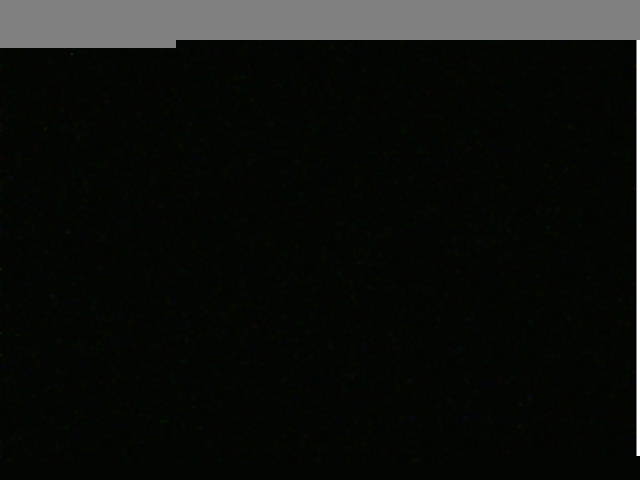
I haven’t been able to identify the identify this image using astrometry.net. Probably there are too few stars for a reliable identification.
After downloading the field of stars, the missing chunks in image 0xF5 were fixed. This image belongs to a series of images of Mare Anguis taken one minute apart in July 12.
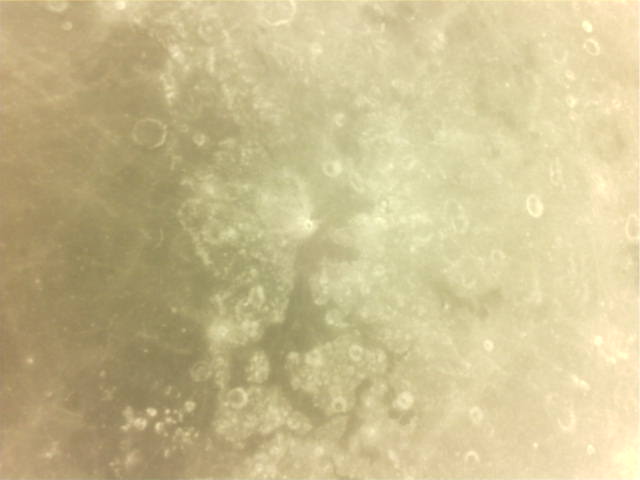
The satellite was programmed to take a series of four images with one minute spacing starting at 07:13, as the satellite passed through the perigee. However, since the payload was being commanded by VHF at that time, only the first image in the series was taken.
The payload accepts commands both by VHF and by RS-422 serial bus connected to the satellite bus, which is used to send commands previously programmed in the satellite using the S-band uplink. However, if the payload is currently transmitting an image using SSDV on the 70cm downlink, commands to take another image will be ignored, regardless of whether they are received over VHF or RS-422. This is what prevented the three last images in the series to be taken.
The image taken near the perigee was partially downloaded and then the download was stopped, since the original idea was to fix the missing chunks in image 0xFE instead.

The GMAT simulation shows that this image was taken as the camera was looking towards Oceanus Procellarum. A zoom factor of 4x instead of the usual 2x was tested with this image. This explains the relative lack of detail in the image.

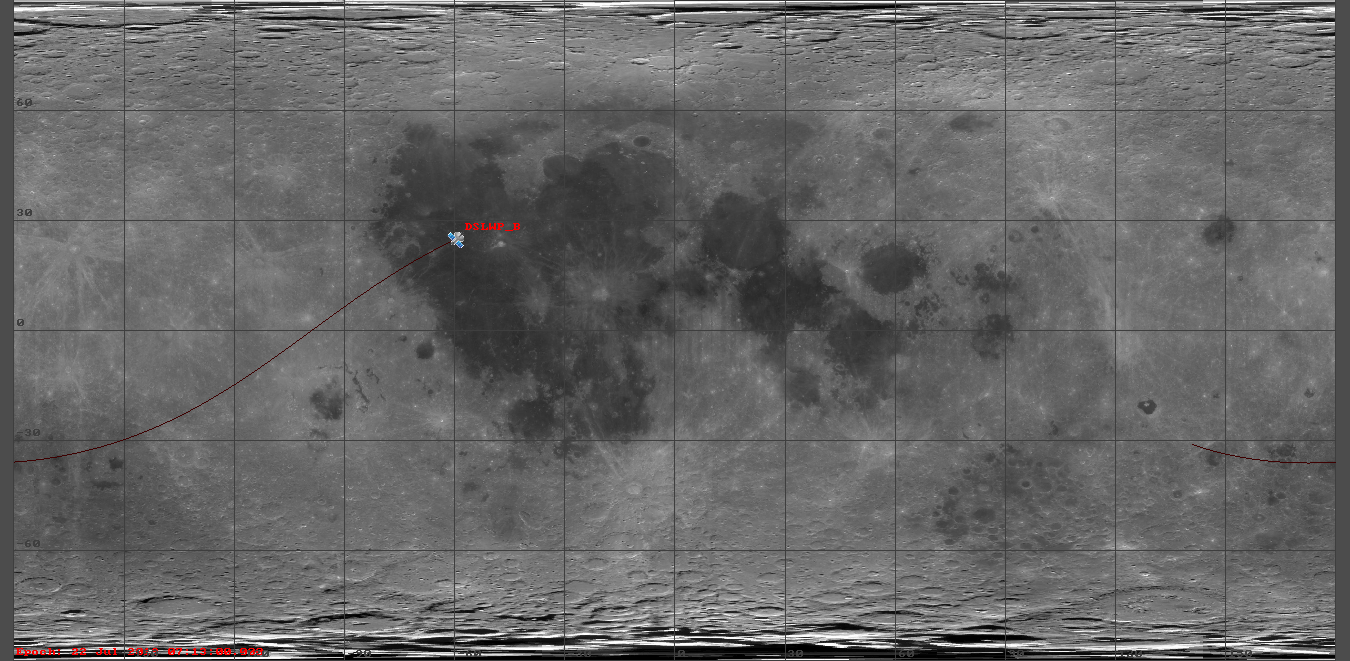
An image was taken manually around 07:24. This image was downloaded later, but it only contains a purple field, so the download was stopped.

Finally, some of the missing chunks of image 0xFE, first downloaded last week, were fixed. With this, the image was almost complete.
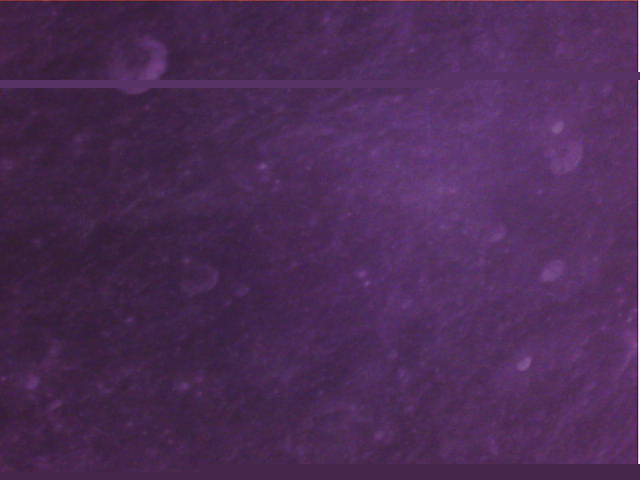
2019-07-22 night
The second activation on July 22 was between 22:40 and 00:40. Dwingeloo was not active, since the time was quite late in Europe and the telescope operators needed some well deserved rest. The Asian stations in Harbin and Shahe (China), and Wakayama (Japan) were used as downlink. Uplink was provided, as usual, by Reinhard Kuehn DK5LA from Germany, who stayed awake despite the late time in Europe.
The first part of the activation was devoted to changing the camera zoom back to 2x, since it was decided that 4x gives worse results. After this, the missing chunks of images 0xFE and 0x01 were downloaded. First, some chunks of 0xFE were downloaded, then the missing chunks of 0x01, and finally the last remaining chunks of 0xFE.
Image 0xFE was identified last week as an area northwest of Schlüter crater. The resolution of this image is around 340m per pixel.

I have not attempted to identify image 0x01 shown below. It belongs to some area in the middle of Oceanus Procellarum, but due to the lack of detail, identifying the exact location is perhaps too difficult or impossible.

2019-07-23
On July 23, the payload was active from 23:10 to 01:20. Dwingeloo was active despite the late time in Europe. One of the activities planned for this slot was to switch the payload transmitter to an \(r=1/2\) Turbo code. Until October 2018, the DSLWP-B transmitters used 250baud with an \(r=1/2\) Turbo code. In October this was changed to 500baud with an \(r = 1/4\) Turbo code, which gives a similar decoding threshold, but performs better for VLBI observations.
Over the last few days, it was discussed to test the transmitter with 500baud and an \(r = 1/2\) Turbo code, which is twice as fast but needs 3dB more SNR for decoding. Since SNR is not a concern when using Dwingeloo to receive, but some of the latest images have taken up to 40 minutes to download, switching to \(r = 1/2\) seemed natural.
Since this is the first time that 500baud with \(r = 1/2\) was used, Wei had to make GNU Radio decoders for Dwingeloo. This decoders gave some small problems when they were first used.
At the start of the activation payload, with the transmitter still at \(r = 1/4\), the paload was commanded to download image 0x04, which was taken at the payload power on. This was used to have a continuous signal to test the decoders at Dwingeloo. The image turned out to be the purple field shown below. The download was stopped manually at 23:43 in order to let the payload execute a pre-programmed imaging as it passed the periapsis.
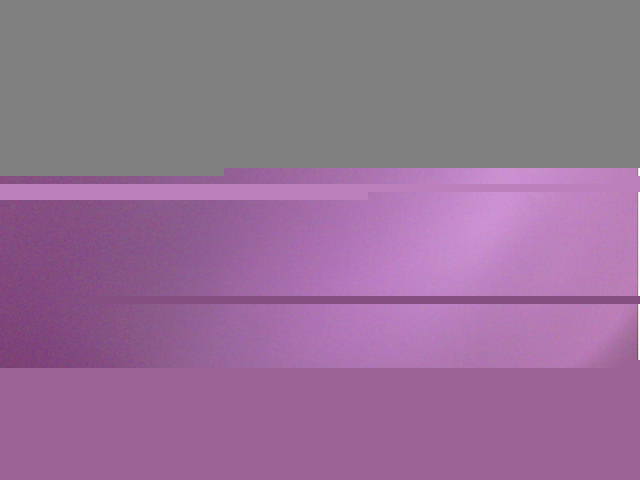
A series of four images with one minute spacing were taken starting at 23:45, as DSLWP-B passed through the periapsis. These images had IDs between 0x05 and 0x08. The camera view prediction in GMAT is shown below.
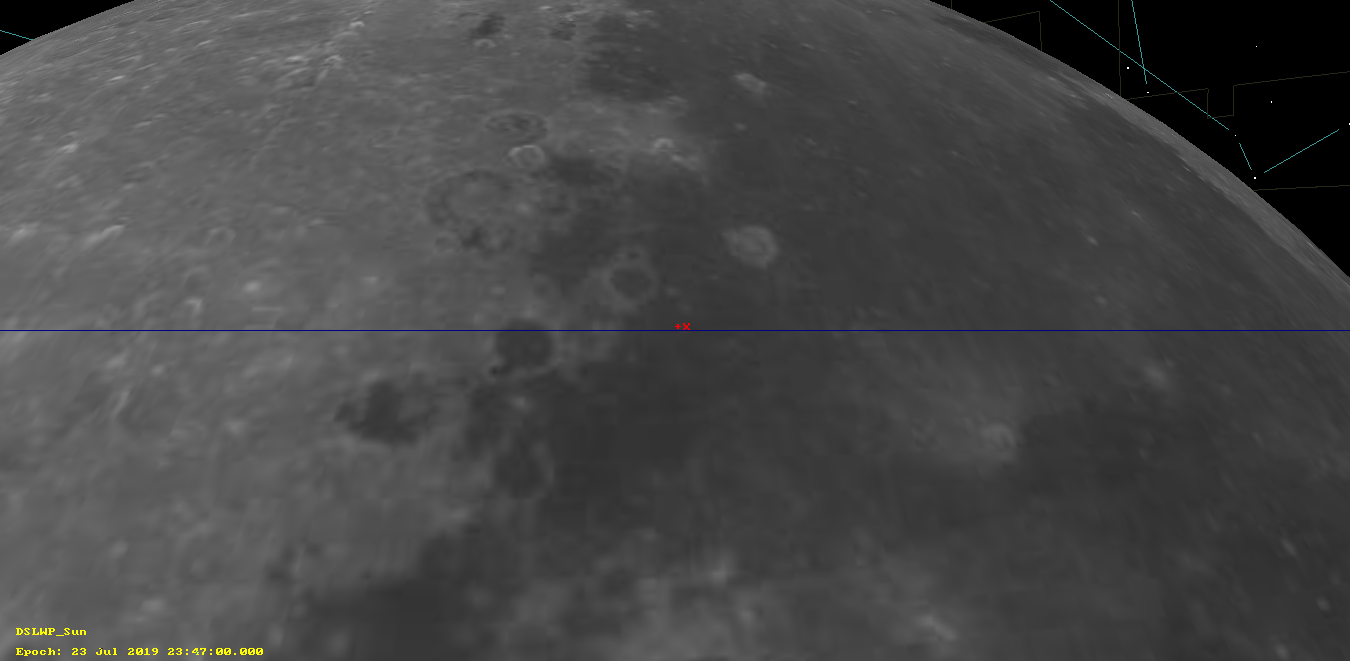
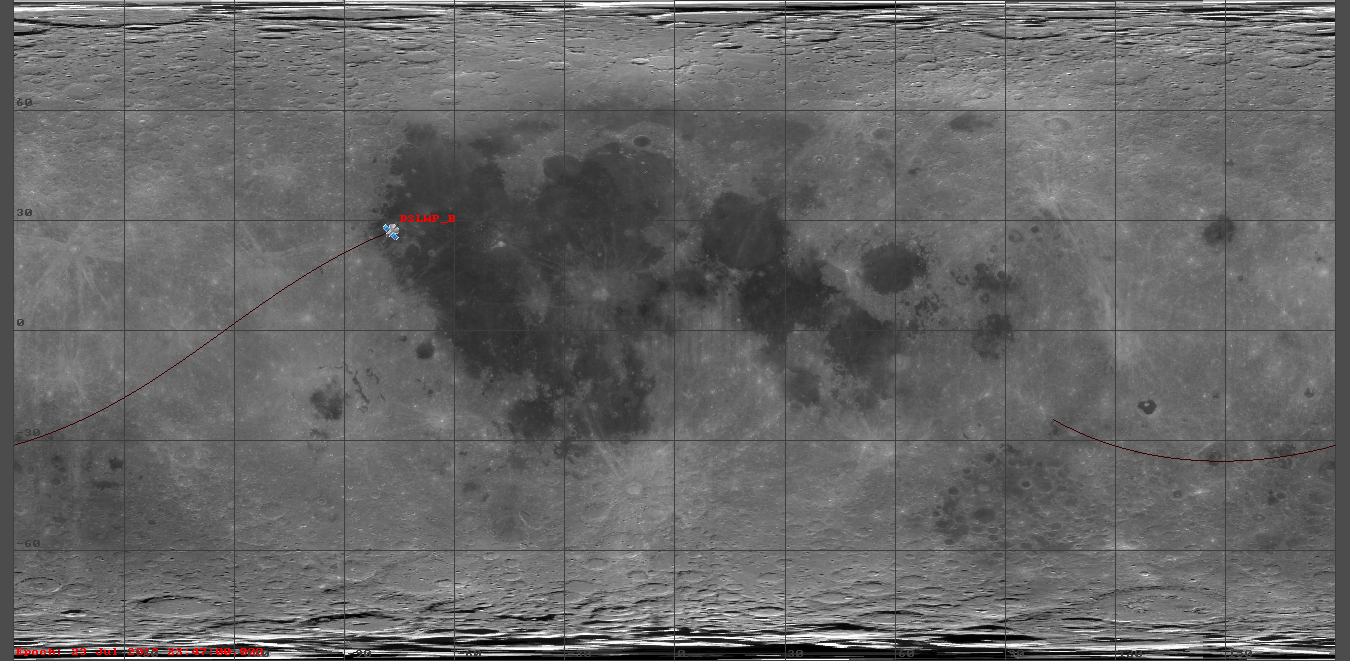
The area shown in the field of view of the camera is the western border of Oceanus Procellarum. The Ulugh Beigh and Lavoisier craters are visible near the centre of the image. Note that, in comparison with the perigee images of July 22, the view has shifted to the west, owing to the rotation of the Moon.
After the four images were taken, the last of them was downloaded. It shows an almost featureless area with a large crater in the bottom right corner. The corresponding area of the lunar surface will be identified below.

After having downloaded this image, the payload was switched to \(r=1/2\) at 00:21. Then, image 0x05 was downloaded. The Ulugh Beigh crater can be seen near the centre of the image, while a large portion of the Ulugh Beigh A crater is visible in the upper right corner. The difference in albedo and texture between the mare and the continental surface is clearly visible.
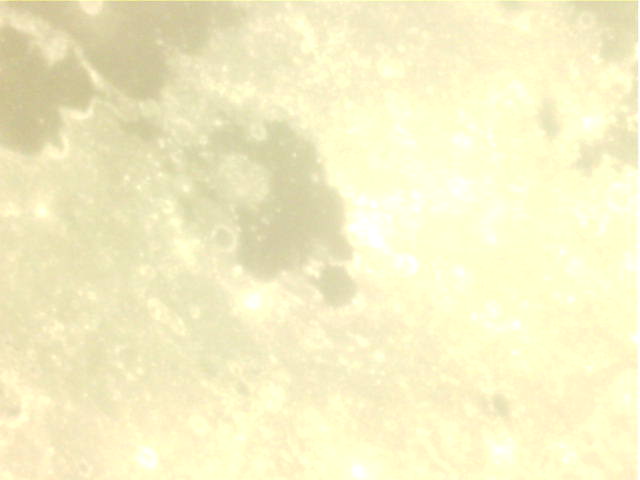
Next, image 0x07 was downloaded. It shows the Lavoisier C and T craters in the lower right corner (see this image), and another crater whose name I have not been able to find near the centre. Note that the upper left of this image overlaps the lower right of image 0x08, and the same crater can be seen in both images. The resolution of this image is approximately 280m per pixel.
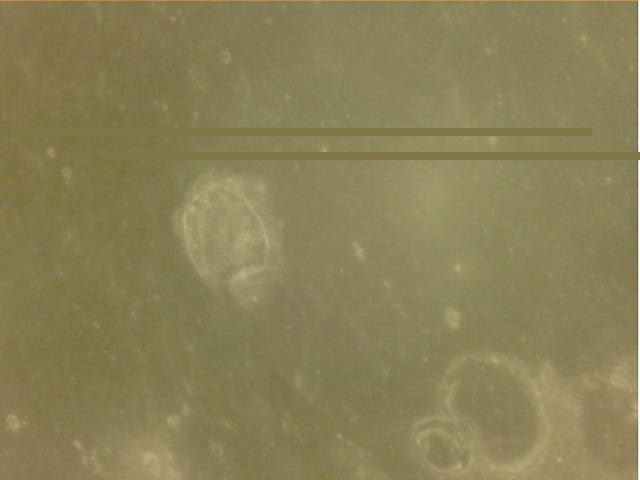
2019-07-25
On July 25 the Amateur payload was active between 00:30 and 02:30. Dwingeloo and Reinhard were not active, due to the late time in Europe. The Asian stations served as downlink and uplink. First, the few missing chunks in image 0x07 were fixed.

After completing image 0x07, image 0x06 was downloaded. This image was the only remaining image from the series of four images taken as DSLWP-B passed the periapsis on July 23. It shows the Lavoisier C and T craters in the top left, Ulugh Beigh A near the centre, and Ulugh Beigh B and C toward the top right (see this image).

Now that the four images of the Ulugh Beigh and Lavoisier area are complete, Tammo Jan Dijkema has made a panorama fusing the four images in Hugin. The lower right image was the first image to be taken, and north is approximately on the left side of the panorama. Click the image to view it in full size.
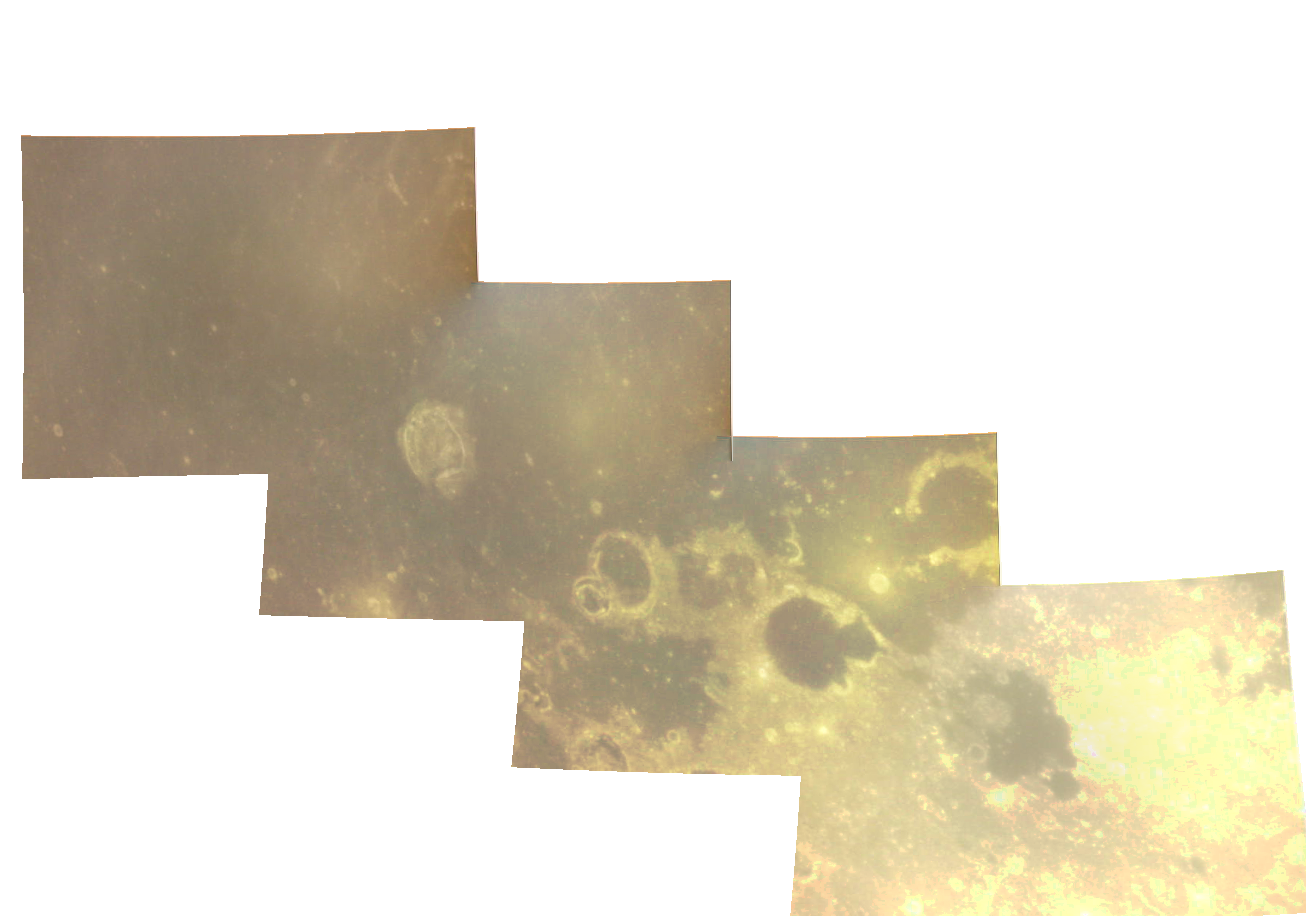
2019-07-26
On July 26, the payload activation was between 10:55 and 12:55 UTC. A series of four images with one minute spacing was pre-programmed to be taken around 11:26, when the satellite was supposed to pass the periapsis. However, the programming was wrong due to a mistake with timezone conversions. The correct passage of periapsis was around 12:26.
Therefore, the first goal in this activation was to prevent DSLWP-B from taking the images programmed around 11:26. As I have mentioned above, the satellite cannot take images while an SSDV transmission is on. Therefore, the idea was to start the download of image 0xFE (which had already been downloaded) before 11:26.
Image number 14 in the buffer (which corresponded to 0xFE) was selected at 11:30. The download image command was sent at 11:20. After this, the download started and the payload hid behind the Moon between 11:32 and 12:16 approximately. Cees Bassa reported that the satellite was transmitting a JT4G message as it exited the occultation. This can be interesting to study diffraction (see this post).
After the satellite reappeared out of occultation, the idea was to send manually the commands to take images near the periapsis. However, only one of these commands was successful, resulting in the camera taking image 0x0B at approximately 12:29. This image was downloaded later, but for some unknown reason it is badly over-exposed, so it is impossible to identify any lunar surface features.

2019-07-28
On July 28 the payload was active between 03:30 and 05:30 UTC. After the payload turned on, image 0x0D, which was taken at payload power on, was downloaded. This image shows a few faint stars, in accordance with the GMAT prediction, in which the Moon was not in the field of view of the camera.

DSLWP-B would hide behind the Moon between approximately 04:16 and 04:55. To get a continuous signal during the occultation (which can be used to study diffraction), the team commanded the download of image 0xFE at 04:07. This image had already been completed at the beginning of the week.
As the satellite came out of the occultation and passed the periapsis, a series of four images was taken automatically between 04:54 to 04:57. The IDs corresponding to these images are 0x0E through 0x11. After the images were taken, the last of them was downloaded. It is shown in the figure below.

Next, the previous image in the series was downloaded. This image, which has an ID of 0x10, is shown below.

According to the GMAT simulation, the area corresponding to these images should be near Joule crater, in the far side of the Moon. In the figure below, which shows the camera view simulation, Sanford crater is clearly visible near the top of the figure. It is a double crater with the smaller Sanford C crater attached to the northern rim of the main crater.

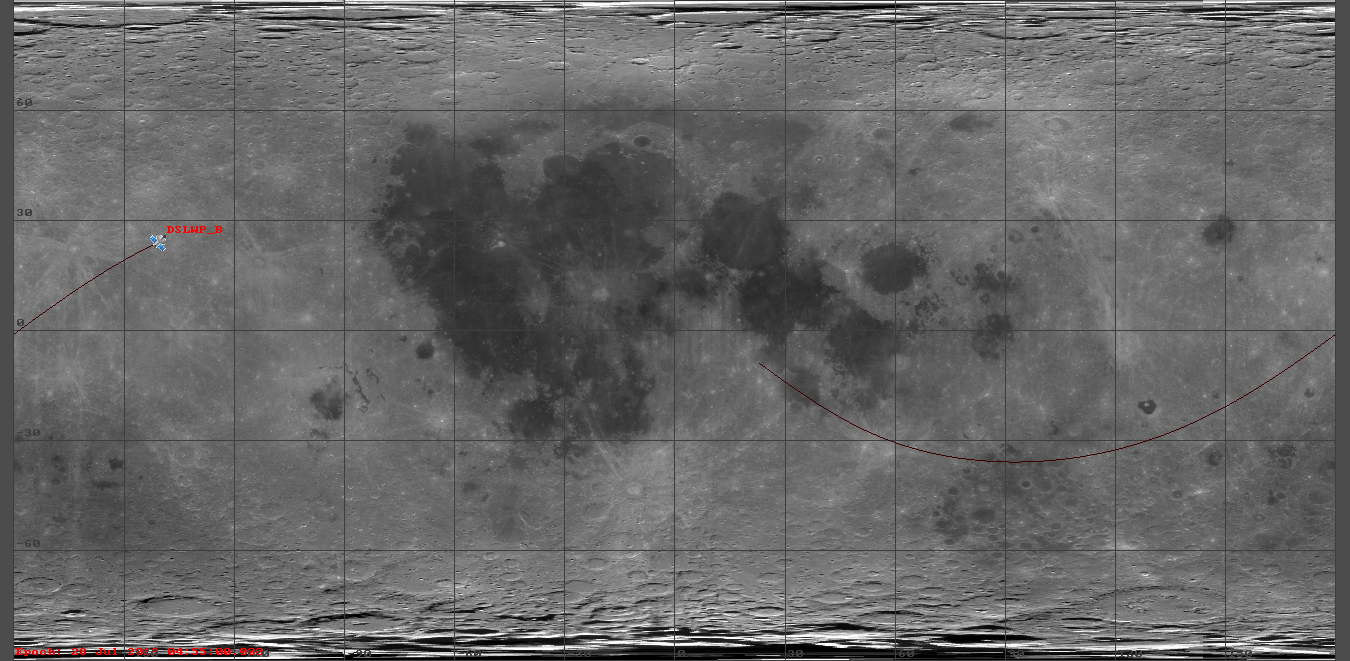
I haven’t managed to identify the craters that appear in figures 0x10 and 0x11. They should be somewhere around Joule crater, but the few craters present in the image don’t look so remarkable that it’s easy to locate them in Google Moon. It is also interesting to note that there is little overlap among the two images (in comparison with the series taken on July 23). The two bright dots near the bottom right corner of 0x10 are also present in the top left of image 0x11.
2 comments